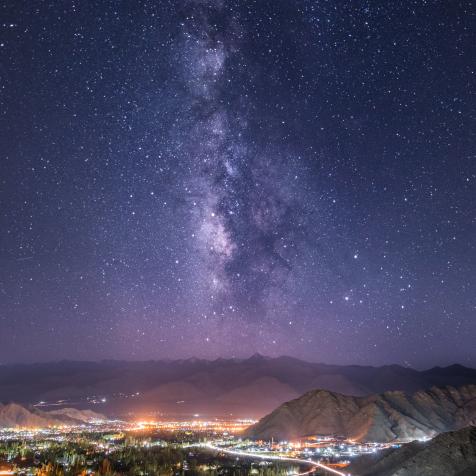
Westend61
Tune in to the 92nd Astronomical Awards!

With award season in high gear and movie stars flocking to Hollywood, let’s look up to the real stars in our lives and celebrate some of astronomy’s biggest results from last year.
With award season in high gear and movie stars flocking to Hollywood, acceptance speeches at the ready, let’s look up to the real stars in our lives and celebrate some of astronomy’s biggest results from last year. It goes without saying that these categories are completely made up and the winners totally arbitrary. But let's have a littel space fun and get to the winners!
Best Planet

Artur Debat
Winner: Mars
Despite a relatively quiet year, everybody’s favorite red planet has once again claimed the top prize. It boasts the greatest number of orbiters and the only rovers of any of the planets in the solar system: NASA’s InSight, MAVEN, Curiosity, Mars Reconnaissance Orbiter, and Mars Odyssey; the European ExoMars, Mars Express; and the Indian Mars Orbiter Mission. So, as usual, it won by default. And while Mars will get four new robotic visitors in 2020, the big highlight in 2019 was the official end of the Opportunity rover mission following a globe-encircling dust storm in the summer of 2018.
Telescope in a Leading Role

2019 National Science Foundation
The Event Horizon Telescope captures a black hole at the center of galaxy M87.
Winner: Event Horizon Telescope
The best part of the Event Horizon Telescope is, of course, the fact that it delivered the very first image of a real life actual black hole. The second-best part, and the part that didn’t get nearly as much airtime, was the fact that it’s not a telescope at all. At least, it’s not a single telescope.
The Event Horizon Telescope is actually a network of instruments strewn across the globe (including Antarctica) that all point at the same target simultaneously. Then, the data is carefully stitched together, giving the same effect as if we had a single dish as wide as the planet Earth. An impressive feat of science and engineering and culminating in the release of an image of powehi, the unofficial name (it’s Hawaiian for “the adorned fathomless dark creation”) for the monster black hole at the center of the galaxy M87.
Orbital Directing

The Asahi Shimbun
The H-2A Launch Vehicle No. 26 carrying Hayabusa 2, an asteroid probe of Japan Aerospace Exploration Agency (JAXA) lifts off from the launch pad at the JAXA's Tanegashima Space Center.
Winner: Hayabusa2
It’s rare for sequels to win a big prize, but the Japanese Space Agency managed to surpass all the technical achievements of the first Hayabusa mission, launched way back in 2010. Hyabusa2 launched in 2014 and took several years to reach its target, the lonely asteroid 162173 Ryugu, where it spent a year and a half in orbit. During that period, it took two – that’s right, two! – samples from the asteroid itself, and in 2019 it began its slow return to Earth. Due for a rendezvous later this year, the intricately planned and executed mission will deliver a time capsule from billions of years ago.
Visual Effects

Universal History Archive
Artist's impression of the New Horizons space probe.
Winner: New Horizons
Back in 2015, NASA’s New Horizons spacecraft stunned the world with the first-ever closeup images of Pluto, revealing nitrogen glaciers, water ice mountains, and puzzles galore. But once you accelerate a space probe to 36,000 mph, you don’t exactly slow it down. New Horizons continued to race outwards from the solar system and with a slight course correction, it had a brief encounter with an enigmatic member of the Kuiper belt, then known as 2016 MU69 and now going by Arrokoth. The images sent back are of the most distant object ever visited by a human craft, an achievement not likely to be repeated for decades.
Science

JONAS EKSTROMER
(From L) Nobel Physics Laureates Swiss Didier Queloz, Swiss Michel Mayor and Caandian US James Peebles attend a press conference at The Royal Swedish Academy of Sciences in Stockholm, Sweden, on December 7, 2019.
Winner: James Peebles, Michel Mayor, and Didier Queloz
The Nobel Prize in 2019 went to three astronomers who unlocked our ultimate understanding of our place in the cosmos. James Peebles has been a cosmologist extraordinaire for decades, churning out paper after paper detailing the history of our cosmos. At the other end of the scale, the pair of Michel Mayor and Didier Queloz were the first astronomers to find a planet orbiting another star.
In other words, last year’s Nobel prize went to the awesomeness that is modern astronomy.






















